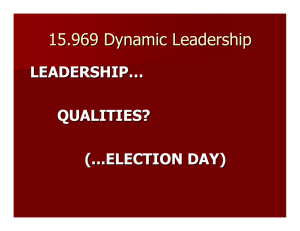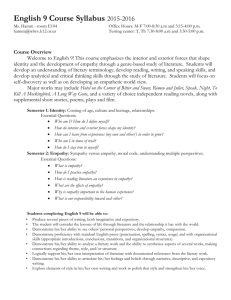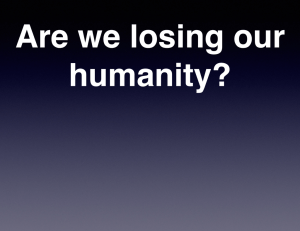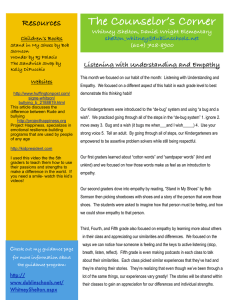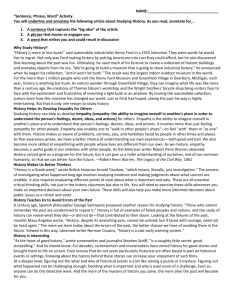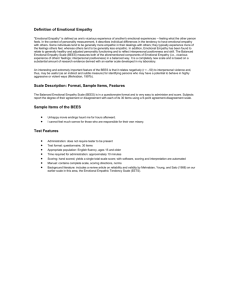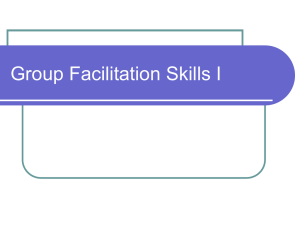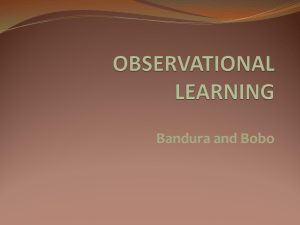Nonviolent Communication And motivational
advertisement
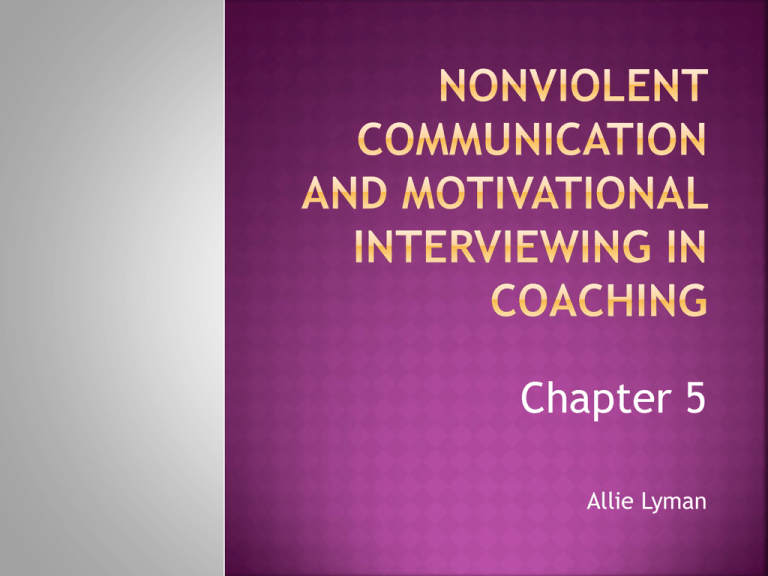
Chapter 5 Allie Lyman Goal: To encourage change talk and discourage resistance talk Both coaches and clients need to make the case for change. Expressing Empathy Developing Discrepancy Rolling with Resistance Supporting Self-Efficacy Through empathy we help expand client awareness, create openness and facilitate change. MI starting premise: Change Talk Empathy and Change Talk combo helps to get the client past a point where they feel “stuck” Make sure to avoid pity and sympathy when trying to be empathetic “I feel sorry for you” “I feel your pain” “I respect your pain” Making observations, not evaluations Express feelings, not thoughts “I failed to exercise last week” “I went to the gym one time last week” “I feel that my boss is controlling” Identify needs, not strategies “I need to stop at the store” “I need to work out everyday” Make requests, not demands “Would you be willing to tell me what you heard me say” “What agreements would you be willing to make with regard to exercise in the coming week?” Refer to page 66 and 67 for good lists of feeling and universal needs words. Open Ended Questions (OEQs) 50% of your question in an MI should be open ended Reflective Simple Reflections – flat mirror Amplified Reflections – concave mirror Double-Sided Reflections – trifold mirror Shifted-Focus Reflections – periscope Decisional Listening Statements Balance Page 69: Quantitative Rating System Rulers On a scale from 1 to 10… “People do not resist change, they resist being changed” Communication patterns that interfere with empathy Shifts that may assist in coaches to roll with resistance From correction to connection From competence to confidence From causes to capacities From counter-force to counterbalance. Self-efficacy is just as important as lasting change and helping clients become their best selves. Empathy begins the process of supporting selfefficacy Quiets judgmental and nay-saying internal voices Developing discrepancy and rolling with resistance follow Continue process without getting bogged down by their own thinking and feeling process Belief in goals will create movements to action
